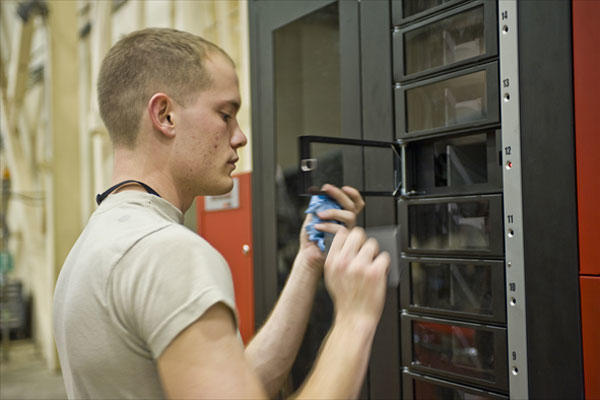Military officials said they want to make vending machines and fast food on base healthier by changing menus and bringing in nutritionally better brands and options.
Franchises such as Burger King and Kentucky Fried Chicken, which have long operated under contracts with the Exchange services, are a common sight on military bases worldwide while vending machines of highly processed snacks are placed near barracks and unit footprints. But to change what each of those restaurants or machines carries, officials must work with the Exchanges to change the contracts, a process that can take a long time to implement, they said.
"We are looking at how we do contracting, what do we have in our contracts, what do we require from the options, how do we make the contracts more competitive," Capt. Kimberly Elenberg, the director of United States Public Health Service's medical readiness and training program, said on Tuesday at the annual Association of the United States Army conference.
"How do we compete the contracts for different restaurants that are on the installation?" she said. "We definitely are taking that on."
The push towards more nutritious options comes as the Defense Department wraps up the Healthy Base Initiative demonstration. That study examines the health and habits of service members and their families at 14 bases worldwide and measured, among other things, their access to healthy food options. The final report will be released in January, Elenberg said.
Since changing which restaurants are available on base could take years, Elenberg said, officials are focusing on making more immediate changes such as asking the restaurants to display calorie counts on menus.
"I'd immediately like to see menu labeling at all of the establishments on the installation so that when service members or families are taught 'these are my healthier choices' they can look at a menu and see what are the best options," she told Military.com. "And I'd like to see more of those options made available. I may not be able to change what establishments are on an installation in the short term but we can work together to promote their better options."
Another push would place products in the vending machines that align with a set of nutrition standards developed by the National Automatic Merchandising Association, known as FitPick or FitPick Select, said Amy Cowell, a public health associate at the Army Public Health Command. Current military vending machine standards require that only 15 percent of the options be healthy.
"All of these things take time, but we'll work with our current vendors. A lot of folks follow national standards, but the question is: are national standards serving us or do we need to work with the establishments to make standards higher," Elenberg said. "What we have to balance is a business model that works as well as aligning that with our priorities as a service."
The average soldier eats one serving of fruit or vegetables every three to six days, Elenberg said. Twenty-two percent of service members and their families are obese compared to 34 percent of the overall U.S. population, she said.
--Amy Bushatz can be reached at amy.bushat z@military.com. Follow her on Twitter at @amybushatz.




























